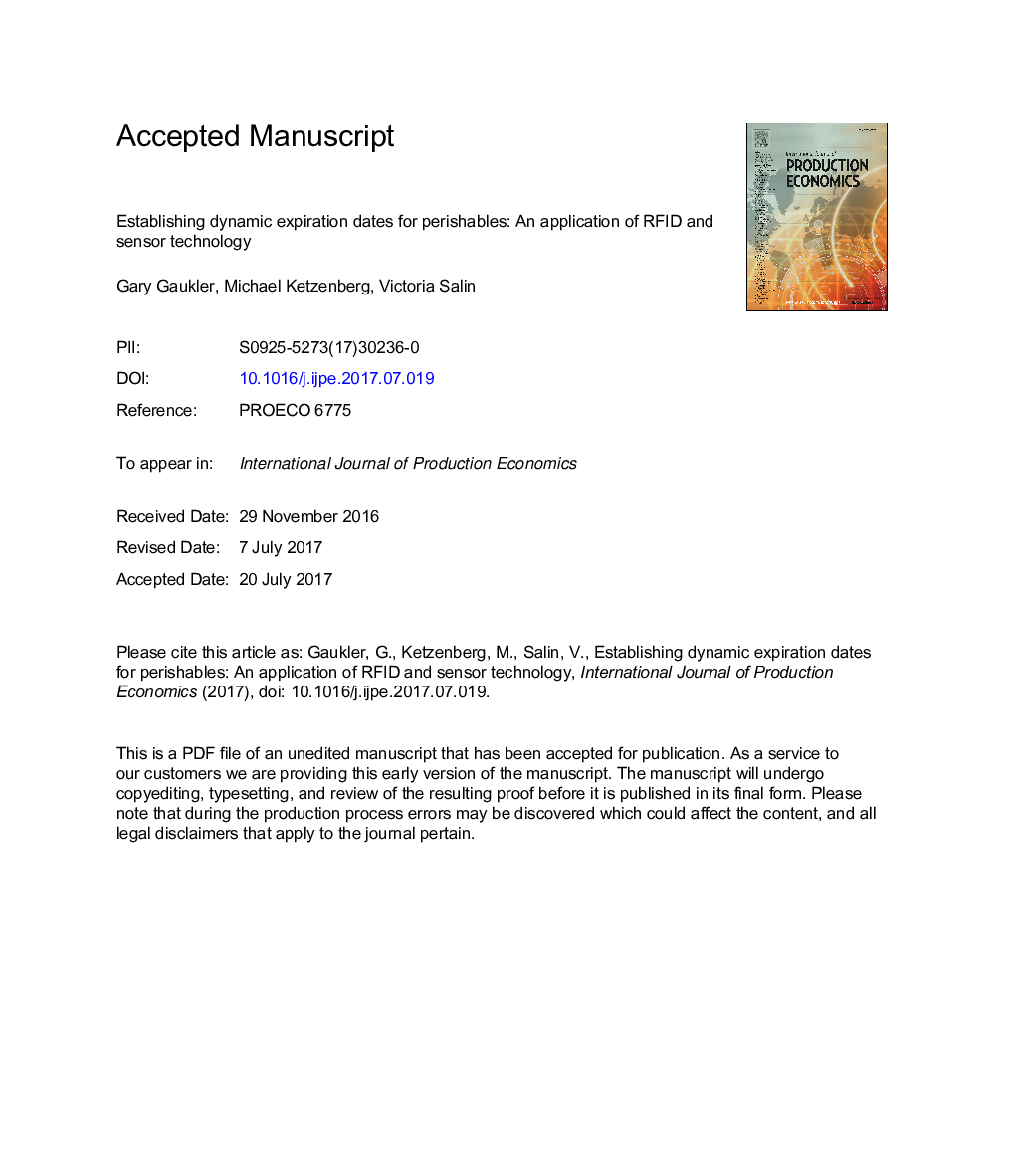| کد مقاله | کد نشریه | سال انتشار | مقاله انگلیسی | نسخه تمام متن |
|---|---|---|---|---|
| 5078856 | 1477511 | 2017 | 47 صفحه PDF | دانلود رایگان |
عنوان انگلیسی مقاله ISI
Establishing dynamic expiration dates for perishables: An application of rfid and sensor technology
دانلود مقاله + سفارش ترجمه
دانلود مقاله ISI انگلیسی
رایگان برای ایرانیان
کلمات کلیدی
موضوعات مرتبط
مهندسی و علوم پایه
سایر رشته های مهندسی
مهندسی صنعتی و تولید
پیش نمایش صفحه اول مقاله

چکیده انگلیسی
Our research addresses the value of information (voi) for the use of a product's time and temperature history (tth). Using tth information, the retailer can set expiration dates dynamically, based on known environmental conditions. This dynamically set expiration date corresponds to the maximum number of periods that inventory may remain available for sale before it must be removed from inventory and discarded (outdated). In current static practice, however, without the availability of tth, environmental conditions are not known and all units of inventory receive the same expiration date, generally predicated on worst case conditions. Our research demonstrates that information on the tth as a product flows through the supply chain can be very valuable. Using the example of a supply chain for fresh packaged tomatoes, we quantify the value of tth information when used for dynamic expiration date setting. We find that the voi is quite sensitive to environmental and parametric settings, ranging upwards to 90.5% with a mean of 41.2%. Our studies demonstrate that the cost savings that leads to the voi from tth and expiration dating stems from two major sources: eliminating the chance of selling perished product, and greatly decreasing the rate at which lost sales occur. In addition, we show that when dynamic expiration dating is used, average product freshness at the time of sale increases significantly. This indicates a win-win situation where costs to the retailer are reduced, and also additional value for the consumer is created. We also extend our analysis into the impact of imperfect information and find that the voi is fairly robust, up to error levels corresponding to a mean absolute percentage error (mape) of approximately 12%. Median voi at those error levels is 16.5%. The impact of errors, however, differs depending on the model parameterization and we find that under certain settings, the voi can remain significant for much larger values of mape.
ناشر
Database: Elsevier - ScienceDirect (ساینس دایرکت)
Journal: International Journal of Production Economics - Volume 193, November 2017, Pages 617-632
Journal: International Journal of Production Economics - Volume 193, November 2017, Pages 617-632
نویسندگان
Gary Gaukler, Michael Ketzenberg, Victoria Salin,